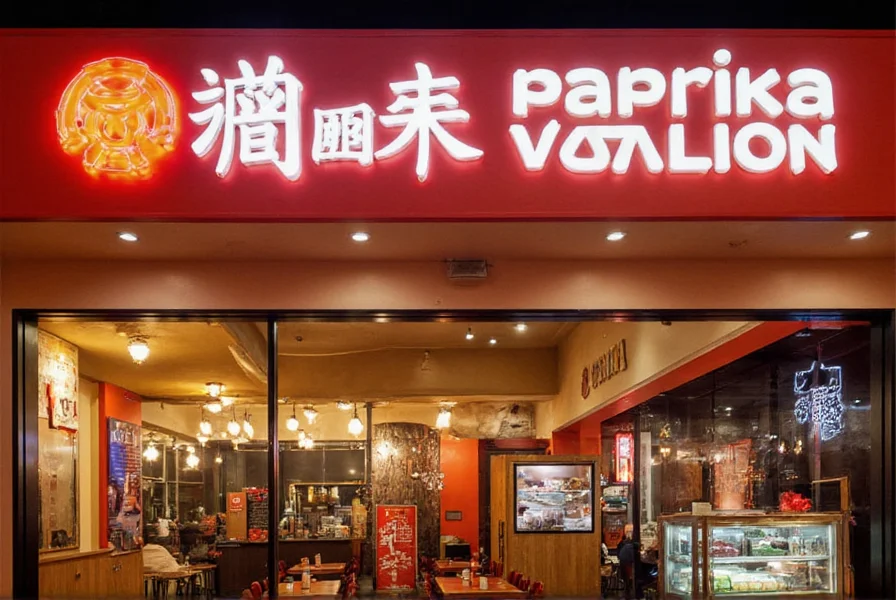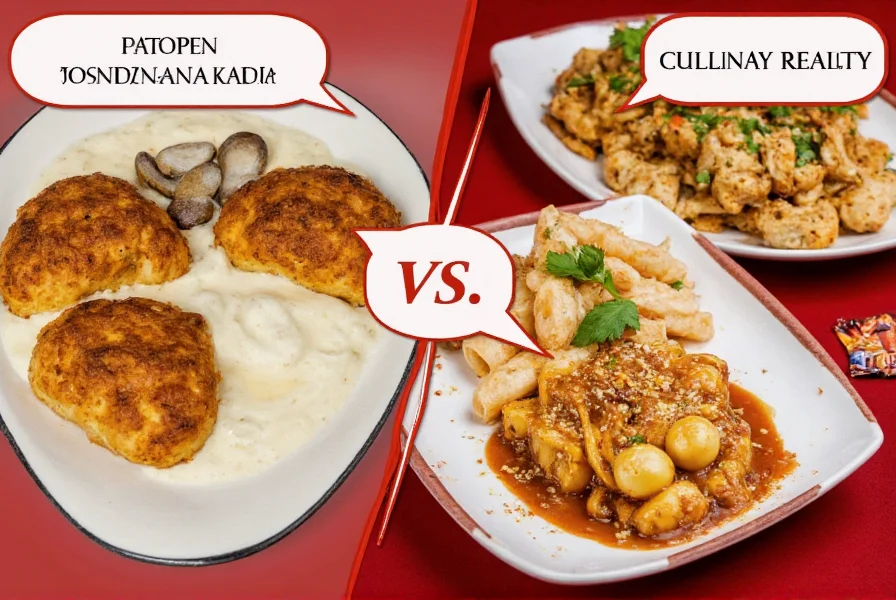When searching for paprika japanese, many people mistakenly believe paprika is a standard component of Japanese cooking. This common misconception stems from the popularity of international Japanese restaurants that sometimes incorporate non-traditional ingredients. Understanding the distinction between authentic Japanese culinary practices and global adaptations is essential for appreciating Japan's rich food culture.
What Is Paprika Japanese Really Referring To?
The term paprika japanese most frequently points to restaurant establishments rather than culinary ingredients. Around the world, numerous Japanese restaurants have adopted Paprika as part of their branding. These establishments range from casual dining spots to upscale sushi bars, often blending traditional Japanese dishes with local flavor preferences.
Authentic Japanese cuisine rarely features paprika. Traditional Japanese cooking emphasizes subtle flavors and natural umami rather than bold spices. The vibrant red color associated with paprika doesn't align with Japanese culinary aesthetics, which prioritize the natural colors of fresh ingredients.

Japanese Restaurants Named Paprika: What to Expect
When you find a Japanese restaurant called Paprika, consider these characteristics:
| Restaurant Feature | Typical Offering | Authenticity Indicator |
|---|---|---|
| Menu Composition | Mix of traditional and fusion dishes | Look for Japanese-language menu options |
| Atmosphere | Modern interpretation of Japanese design | Traditional elements like tatami or shoji screens |
| Staff Expertise | Knowledge of basic Japanese dishes | Japanese-speaking staff or chefs with Japan experience |
Restaurants using the Paprika Japanese restaurant name often cater to local tastes while maintaining core Japanese culinary techniques. They might offer creative rolls or dishes incorporating regional ingredients alongside more traditional options.
Why Paprika Isn't Traditional in Japanese Cooking
Japanese cuisine developed with minimal reliance on red pepper spices like paprika. Historical trade routes and agricultural conditions shaped Japan's distinctive flavor profile:
- Geographical isolation limited introduction of New World peppers until relatively recently
- Cultural preference for delicate flavors over intense heat
- Alternative seasonings like wasabi, ginger, and citrus yuzu fulfilled aromatic needs
- Visual aesthetics prioritizing natural ingredient colors rather than uniform red hues
When exploring Japanese cuisine paprika confusion, understanding Japan's native spice alternatives provides valuable context. Traditional Japanese cooking uses:
Authentic Japanese Seasonings You Should Know
Instead of paprika, Japanese chefs rely on these traditional seasonings:
- Shichimi Togarashi - The "seven-flavor chili pepper" blend containing orange peel, sesame seeds, and sansho pepper
- Ishikawa Karashi - Japanese mustard with distinctive sharpness
- Yuzu Kosho - Fermented citrus-chile paste from Kyushu region
- Sansho Pepper - Citrusy, numbing berry from Japanese prickly ash tree
These seasonings demonstrate Japan's sophisticated approach to flavor that doesn't require paprika in Japanese dishes. Each offers unique taste dimensions that complement rather than overwhelm delicate ingredients.

Finding Authentic Japanese Dining Experiences
When searching for genuine Japanese culinary experiences, look beyond naming conventions. Consider these factors when evaluating Japanese restaurants near me:
- Menu specificity - Authentic establishments often list regional specialties (Kyoto-style, Osaka-style)
- Ingredient transparency - High-end restaurants specify fish origins and seasonal availability
- Preparation methods - Look for traditional techniques like hand-pressed sushi (nigiri)
- Cultural cues - Japanese-language signage, traditional seating options, and proper etiquette expectations
Don't be misled by creative restaurant names like Paprika Japanese dining. Focus instead on the quality of ingredients, preparation techniques, and whether the establishment respects Japanese culinary traditions while adapting appropriately for local contexts.
Common Misconceptions About Japanese Spices
Several misunderstandings persist about spices in Japanese cooking:
- Misconception: Japanese food is bland - Reality: Japanese cuisine emphasizes umami and subtle flavor layers
- Misconception: Wasabi comes from horseradish - Reality: True wasabi (wasabia japonica) is rare and expensive
- Misconception: All Japanese food is raw - Reality: Japan has diverse cooking techniques including grilling, simmering, and steaming
- Misconception: Soy sauce is the primary seasoning - Reality: Dashi broth forms the flavor foundation of most dishes
Understanding these distinctions helps navigate the paprika japanese restaurant confusion and appreciate authentic Japanese culinary artistry beyond superficial naming conventions.
Conclusion: Appreciating Japanese Culinary Traditions
The search for paprika japanese reveals an important lesson about cultural appreciation. Rather than focusing on misleading terms or non-traditional interpretations, exploring genuine Japanese seasonings and cooking techniques offers deeper culinary satisfaction. Whether you're seeking a Japanese restaurant named Paprika or trying to understand authentic Japanese flavors, prioritizing education over assumptions leads to more rewarding dining experiences.
Frequently Asked Questions
Is paprika used in traditional Japanese cooking?
No, paprika is not traditionally used in Japanese cuisine. Authentic Japanese cooking relies on native seasonings like wasabi, shichimi togarashi, and sansho pepper instead of red pepper spices like paprika.
Why are there Japanese restaurants called Paprika if it's not Japanese?
Restaurant names like Paprika often reflect creative branding rather than culinary authenticity. These establishments typically blend traditional Japanese dishes with local preferences, using memorable names to attract customers while still offering core Japanese cuisine elements.
What spice is similar to paprika in Japanese cooking?
Shichimi togarashi (Japanese seven-spice) provides a somewhat similar color and mild heat. This traditional blend contains red chili peppers along with orange peel, sesame seeds, and sansho pepper, creating a more complex flavor profile than plain paprika.
How can I identify an authentic Japanese restaurant?
Look for specific indicators: Japanese-language menu options, regional dish specialties, traditional preparation methods, and Japanese-speaking staff. Authentic establishments often emphasize seasonal ingredients and proper presentation rather than relying on creative names like Paprika that might suggest fusion rather than tradition.











 浙公网安备
33010002000092号
浙公网安备
33010002000092号 浙B2-20120091-4
浙B2-20120091-4